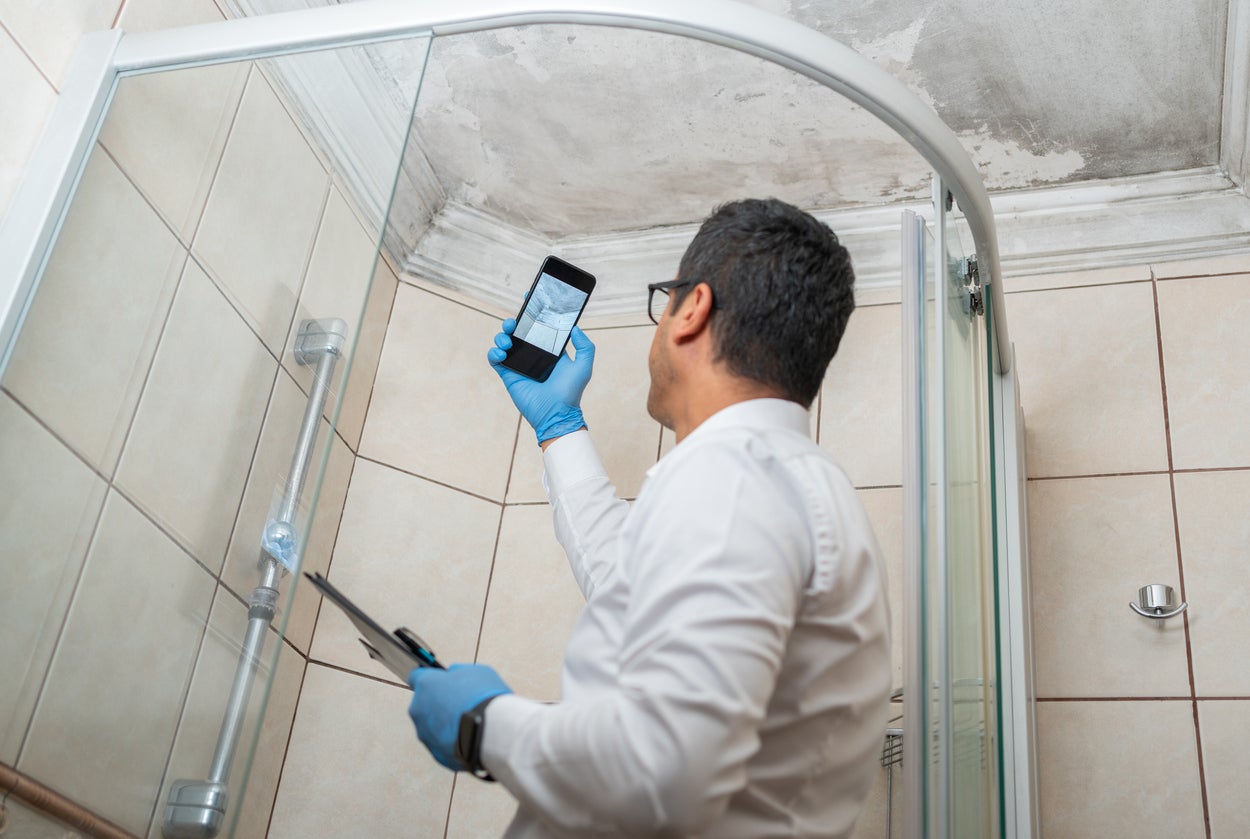Expert Tips for Blog Post Mold Remediation Success
In the realm of mold and mildew removal, efficiently eradicating mold and mildew is just half the fight; real challenge hinges on avoiding its reappearance. Post-remediation initiatives play an essential function in making sure a mold-free setting in the long-term. By sticking to expert tips and finest methods, individuals can protect their areas against mold revival and preserve a healthy indoor atmosphere. It is in this phase of the remediation process that focus to information and aggressive actions absolutely make a distinction.
Screen Humidity Degrees Routinely
Regular surveillance of moisture levels is necessary in making sure the efficiency of message mold removal initiatives. After completing mold removal treatments, preserving ideal humidity levels is critical to stop mold re-growth and ensure a healthy and balanced indoor setting. Tracking humidity degrees permits very early detection of any type of spikes or fluctuations that can potentially lead to mold and mildew revival. High humidity degrees above 60% create a helpful environment for mold and mildew to thrive, making normal monitoring a proactive measure to prevent any type of future mold issues - testing air quality after mold remediation.
Using hygrometers or dampness meters can aid in precisely gauging moisture degrees in different areas of the residential property. These devices provide real-time data that allows remediation specialists to make educated decisions relating to air flow, dehumidification, and other needed activities to preserve excellent moisture degrees post-remediation. In addition, developing a regular schedule for humidity checks, especially in high-risk locations such as cooking areas, washrooms, and cellars, is a positive technique to mold and mildew avoidance. By constantly keeping an eye on humidity degrees, homeowner can successfully reduce the risk of mold and mildew reoccurrence and preserve a healthy interior atmosphere post-remediation.
Conduct Thorough Inspections Post-Remediation
Following the completion of mold and mildew remediation procedures, it is essential to carry out comprehensive assessments to validate the effectiveness of the remediation procedure. These post-remediation inspections are important in making certain that the mold problem has actually been successfully dealt with which there is no reappearance or remaining mold development. Inspections must be performed by qualified professionals who have expertise in recognizing mold and mildew and assessing indoor air high quality.
During these evaluations, numerous approaches such as aesthetic assessments, air tasting, and surface tasting might be used to extensively review the remediated locations. Aesthetic analyses entail an in-depth examination of the properties to examine for any kind of noticeable indicators of mold and mildew growth or water damage. Air sampling helps in determining the airborne mold and mildew spore degrees, while surface sampling can spot mold particles on surfaces.
Implement Correct Air Flow Methods
After guaranteeing the performance of the mold removal process via Continued comprehensive inspections, the next essential step is to concentrate on implementing appropriate ventilation techniques. Ample ventilation is crucial in avoiding mold and mildew reoccurrence by controlling wetness degrees and promoting air flow.
Appropriate ventilation not only aids in stopping mold and mildew development yet additionally adds to the total wellness and convenience of residents. By making sure appropriate ventilation throughout the home, you can minimize the risk of mold regrowth and create a much healthier living setting.

Usage Mold-Resistant Materials for Repairs
To boost the lasting efficiency of mold removal efforts, incorporating mold-resistant products for fixings is important in minimizing the danger of future mold growth. Mold-resistant products are developed to stand up to moisture and inhibit mold growth, this page making them a crucial option for locations prone to wetness and moisture. When repairing areas affected by mold, using products such as mold-resistant drywall, mold-resistant paints, and mold-resistant caulking can help stop mold reoccurrence.
Mold-resistant drywall is an exceptional alternative to conventional drywall in locations like restrooms and basements where moisture levels are higher. When subjected to damp problems, this kind of drywall has a special layer that resists mold development even. Furthermore, making use of mold-resistant paints containing antimicrobial agents can even more prevent mold advancement on walls and ceilings.
In areas where wetness prevails, such as washrooms and kitchens, utilizing mold-resistant caulking around tubs, sinks, and windows can aid secure out water and protect against mold and mildew from holding in fractures and gaps. By investing in these mold-resistant materials throughout fixings post-remediation, you can significantly reduce the chance of future mold and mildew problems and preserve a healthier interior environment.
Maintain Cleanliness and Address Water Issues
After mold remediation, it is critical to maintain a clean atmosphere to protect against the regrowth of mold. Leaks, water invasion, or high humidity degrees can develop the perfect breeding ground for mold, so it is necessary to fix any type of water-related issues quickly.
To maintain cleanliness, think about utilizing HEPA filters in vacuum cleaners and air cleansers to catch mold and mildew spores and prevent their circulation in the air. Making certain correct air flow in locations vulnerable to moisture build-up, such as kitchens and bathrooms, can aid maintain moisture degrees in check. By remaining vigilant about cleanliness and addressing water concerns without delay, you can successfully avoid mold reinfestation and preserve a healthy interior atmosphere.
Final Thought

In the realm of mold and mildew removal, successfully eliminating mold is just half discover this info here the fight; the true challenge lies in avoiding its reappearance. After finishing mold and mildew removal procedures, maintaining ideal moisture degrees is critical to prevent mold and mildew re-growth and make certain a healthy indoor environment. High moisture degrees over 60% create a conducive environment for mold to flourish, making routine keeping an eye on an aggressive action to protect against any type of future mold problems.
To improve the long-lasting efficiency of mold remediation efforts, including mold-resistant products for fixings is crucial in mitigating the threat of future mold and mildew development. After mold remediation, it is crucial to maintain a tidy atmosphere to avoid the regrowth of mold.